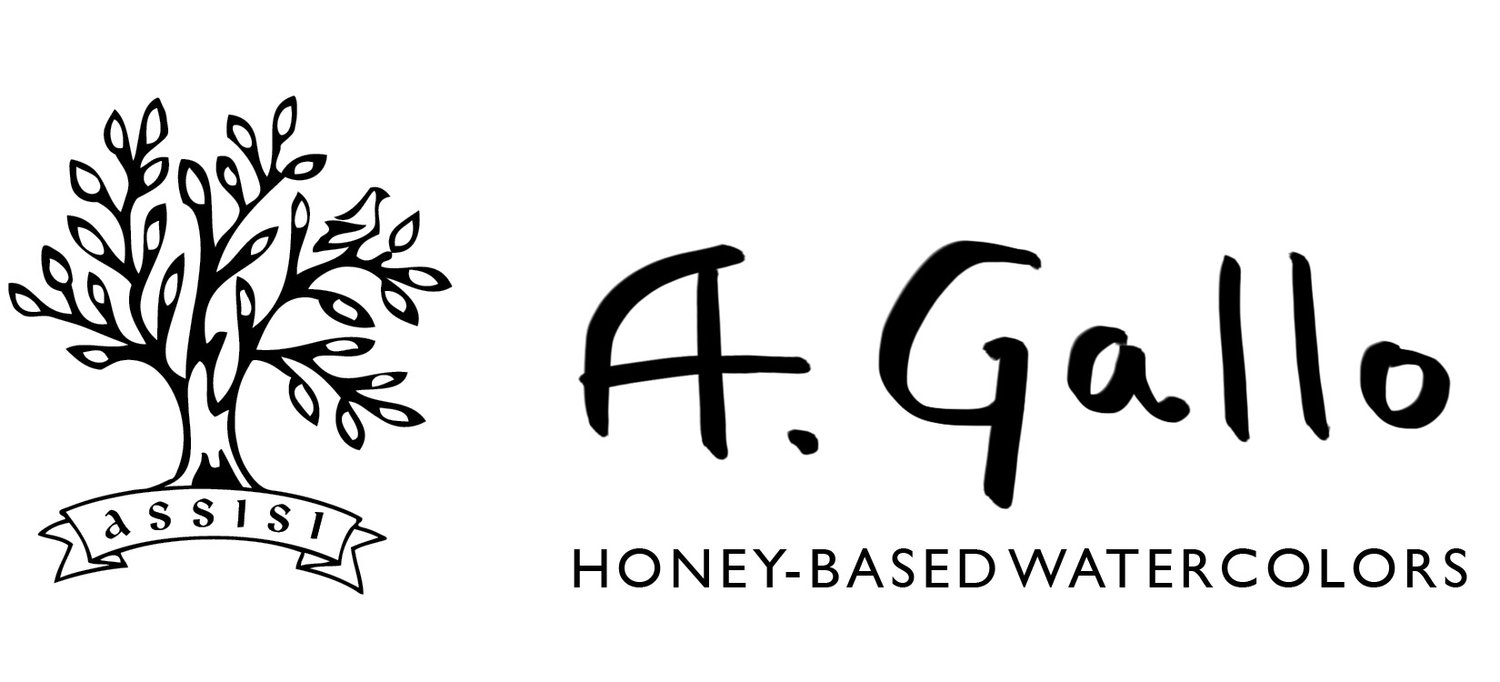
an artisan recipe
Our watercolors are crafted according to a traditional recipe of raw pigments, gum arabic, local honey and rosemary essential oil and mulled by hand on a glass slab. Honey is added to help the paints retain water and increase their longevity.
I nostri acquerelli sono realizzati a mano, secondo una ricetta tradizionale di pigmenti, gomma arabica, miele locale e olio essenziale di rosmarino. Il miele è aggiunto per aiutare la pittura a ritenere acqua e rimanere facilmente attivabile e accessibile anche dopo lungo tempo.
Making PAINT STARTS WITH A BINDER
While vibrant pigments have the most obvious role in our watercolors, the medium or "binder" that suspends the paint is absolutely fundamental. Our binder is made from pure lumps of Kordafan gum arabic from the Acacia senegal tree. The raw gum crystals are dissolved in distilled water for 24-36 hours and then filtered by hand 2-3 times to remove any plant matter and impurities. The gum arabic solution is then mixed with a percentage of glycerin, a plasticizer, which prevents the cracking and chipping of dry paint. Honey is added as a humectant, and rosemary essential oil is also added for its natural antifungal property.
Il legante è un composto a base di pura gomma arabica Kordafan (Acacia Senegal). I cristalli di gomma arabica vengono dissolti in acqua distillata per 24-36 ore e filtrati a mano per rimuovere ogni impurità. La soluzione di gomma arabica viene poi aggiunta di una certa percentuale di glicerolo, un plastificante che previene la screpolatura della pittura una volta essiccata. Infine viene aggiunto del miele, come umettante, per aiutare la pittura a ritenere acqua e rimanere facilmente attivabile e accessibile anche dopo lungo tempo. L’olio essenziale di rosmarino, aggiunto in qualche goccia, ha invece un naturale potere antifungino.
Mulling THE PAINT
Pigment particles are dispersed through milling in the transparent binder. First, the two are combined using a palette knife. A dispersant, or wetting agent, helps facilitate in the mixing of the pigment and water based binder. This stage of the process is particularly important (and laborious) for the finely divided or water repelling pigments.
Once united, the pigment and binder are milled on the slab with a glass muller. During this stage, the pigment particles are distributed evenly throughout the binder and the paint becomes homogenized and smooth.
I pigmenti e il legante vengono prima impastati con una spatola e poi macinati su una lastra di vetro. In questo stadio le particelle di pigmento si disperdono in maniera omogenea e la pittura diventa fluida.
POURING THE PANS
Once mulled, the paint is transferred from the glass slab into a jar to rest, insuring that the pigment is stabilized with the binder. Then, unlike commercially "extruded" paints, it is poured by hand into the pans which are refilled several times as they dry over the course of 4-5 weeks.
If you are interested in learning more about this process and watercolor materials in general, Bruce MacEvoy's website HANDPRINT is a great resource.
Una volta macinata e unita al legante la pittura viene versata in barattoli di vetro per riposare e garantire stabilità con il legante. Infine, a differenza della maggior parte dei marchi commerciali, i godet vengono riempiti a mano e in più fasi, lungo un periodo di quattro o cinque settimane, per ottimizzare l’asciugatura.
Se volete saperne di più potete consultare “Handprint”, il sito di Bruce MacEvoy.






